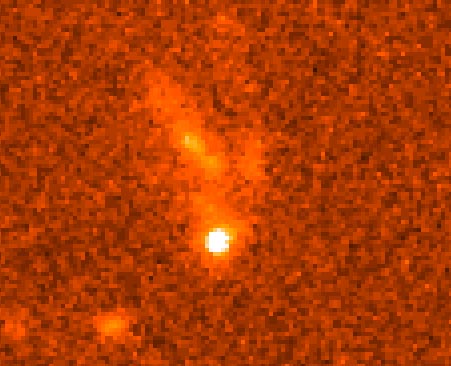
|
Explanation: Do the powerful explosions known as gamma-ray bursts (GRBs) originate in galaxies? This subject took on new light yesterday with the release of a Hubble Space Telescope image of the sky surrounding GRB 990123. This burst was first detected only two weeks ago and cataloged as one of the most powerful GRBs ever. The optical transient (OT) counterpart to the GRB can be seen as the bright spot just below center. Once so bright it was briefly visible with just binoculars, this OT has since become four million times dimmer and continues to fade. Now, it can be seen easily with only a large telescope. The diffuse object above is of particular interest because it appears to be the host galaxy of GRB 990123. This distant galaxy seems to have a normal brightness but an irregular shape. This discovery increases the evidence that most OTs do occur in galaxies. Are all host galaxies this strange?
|
January February March April May June July August September October November December |
| |||||||||||||||||||||||||||||||||||||||||
NASA Web Site Statements, Warnings, and Disclaimers
NASA Official: Jay Norris. Specific rights apply.
A service of: LHEA at NASA / GSFC
& Michigan Tech. U.
Based on Astronomy Picture
Of the Day
Publications with keywords: gamma-ray burst - host galaxy - GRB
Publications with words: gamma-ray burst - host galaxy - GRB
See also:
